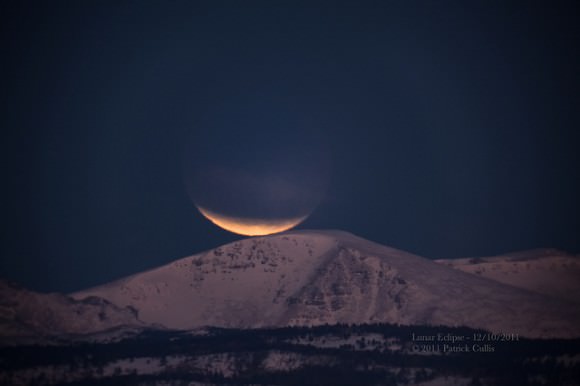
It was the final lunar eclipse of the year, and the last total lunar eclipse event for the western portion of the Americas until 2014, so skywatchers took advantage of clear skies, and many have shared their images and videos with Universe Today. Enjoy the views! For many of the images you can click on them and see larger versions on our Flickr group.
Above is a view in Colorado, taken by Patrick Cullis, showing the Indian Peaks with the eclipsing Moon setting overhead, taken during the lunar eclipse in the early morning hours of December 10, 2011. The Indian Peaks are a series of peaks on the continental divide near Boulder, Colorado. “The Moon set behind the continental divide right before totality, but it was still an awesome sight,” Cullis said.
Below is a video a to-die-for view of the eclipse over the Pacific Ocean.
Paul Miller shared this awesome video, and below is an image he took:
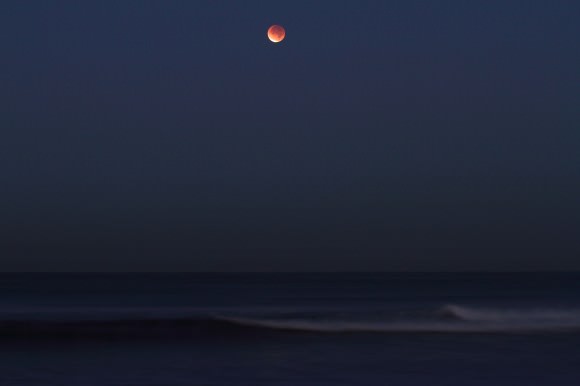
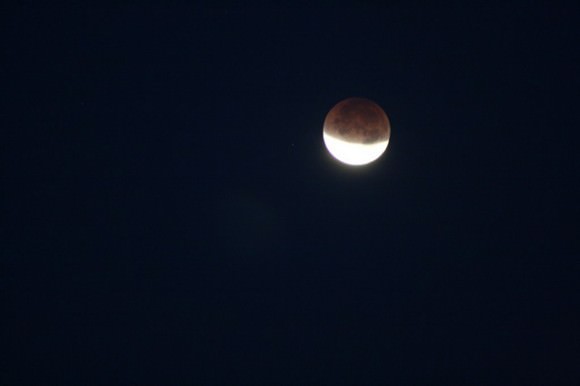
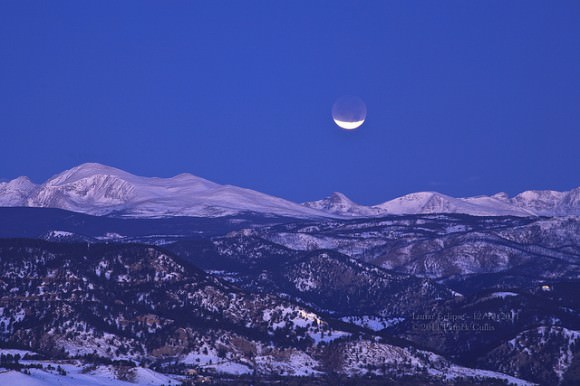
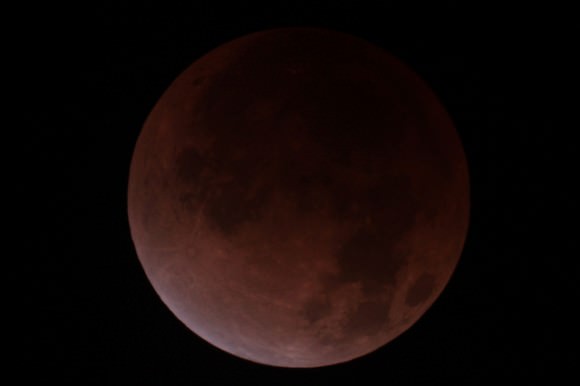
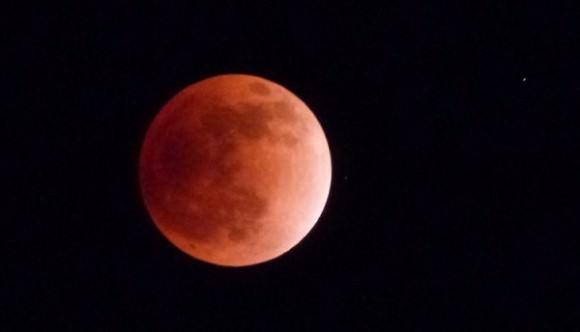
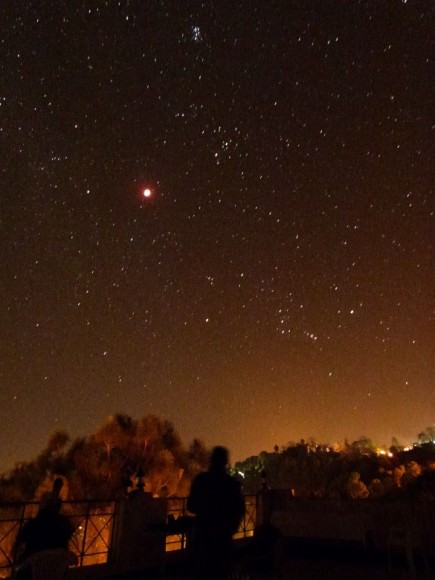
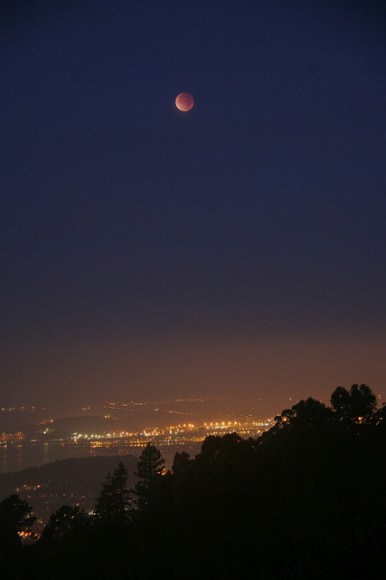
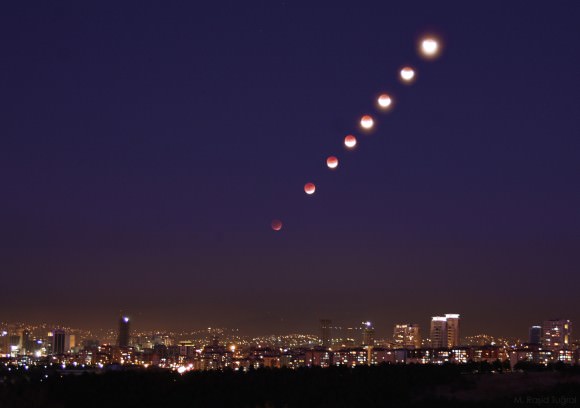
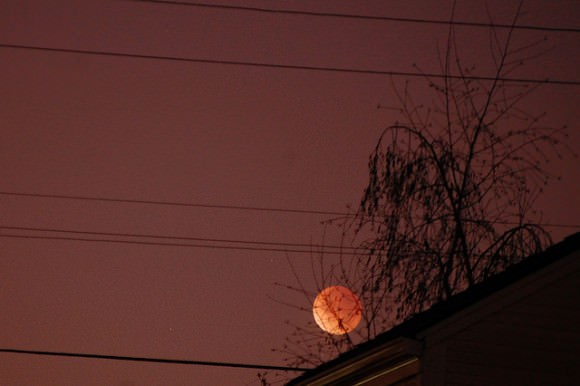
This timelapse is from Steve Knight in Banbury, UK showing the eclipsed Moon moving between cloud banks:
We’ll add more as they become available; in the meantime, check out Universe Today’s Flickr Group for new additions! And if you have some you’d like to see posted on Universe Today, upload yours to the group.

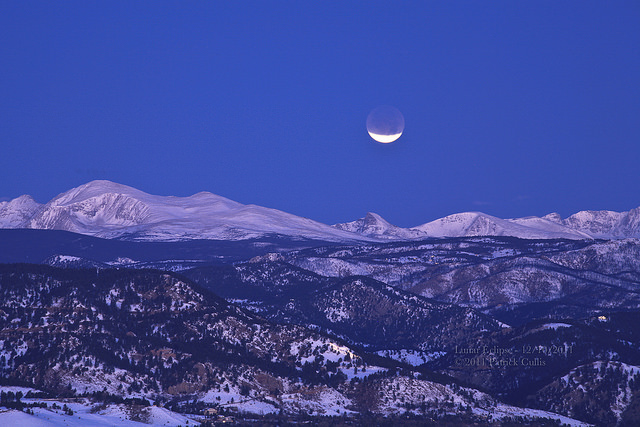
It was great to see the lunar eclipse with our own eyes this morning. But these photos are AMAZING! So we linked to your Universe Today post of photos at Lofty Ambitions today. We found a couple of other sites with good photos, too. Here’s the link to our piece and those other links: http://loftyambitions.wordpress.com/2011/12/10/on-this-date-lunar-eclipse-more/.
I’m in Adelaide, South Australia. We had overcast skies — clouds too thick to even see a glow where the moon ought to be — but on the plus side it was a lovely temperate night. I peeked outside every thirty minutes, just in case, and on one such inspection I saw the eclipsing moon for a few seconds through a tiny gap in the clouds.
At this point I decided to go for a walk, in the hope of snapping a photograph through another such fleeting gap in the clouds. All I could hope for was maybe two seconds of visibility every half hour — or worse — but it was a good night for a walk anyway, so why not? I headed for the best spot I could think of to watch from: the top of a hill in the middle of a local park, which offered a great view and an absence of streetlights.
I set my camera to night mode, though without a tripod I knew I wouldn’t have much chance of getting an picture in focus. But I could lean my elbows on a tree or even lie on the ground in order to give it my best shot. Also, with such fleeting windows of visibility I knew there would be no chance to experiment with different camera settings.
The best picture I got is, unsurprisingly, rubbish. But given what I was up against I’m happy to have got anything at all. Here it is: http://twitter.com/#!/GoldHoarder/status/145525080590516224
If that shared image had been sharper in focus, it would have made a nice, well-framed picture – very atmospheric (if you’ll excuse the pun).
So I watched it here from Banff, Alberta. Why did it not go red here? I have an idea in my mind as to why it was just black but I trust what I surmise as much as someone who loves science should.
The photo from Colorado is similar to what I saw.
I understand why it normally is red but not why it wasn’t from my perspective.
As I understand it, viewers in North America saw the moon enter eclipse as it was setting. Here in Guangdong, China, we had clear skies and a prime location for viewing the entire process- about 3 hours or so. During both the beginning and ending of the eclipse, the eclipsed portion of the moon was indeed blackish, as you described. As we got closer to totality, the moon began to take on a dark red color, and while in totality it varied from dark red to a golden orange-red color… not quite copper, but more golden-orange. At any rate, I presume that the difference in color arises from the difference in the penumbra (blackish) and the umbra (reddish/orangeish). I posted a couple photos in the Flickr group~ hope this helps~!
Paul Miller’s “lunar eclipse over the Pacific Ocean” stirs my soul: Seeing the Moon suspended above wide-open coastal waters, especially in Lunar Eclipse, can be enthralling.
The shot of it over the ocean really is wonderful, that small crimson disc set in blue.
Here in Singapore, I did manage a few bad shots of it (http://dl.dropbox.com/u/900994/eclipse.jpg ), but given my absolutely zero experience in astrophotography I can’t say I’m not pleased with the results!
It appeared red during totality for me in Maple Ridge BC before the clouds came, but not very sharp due to a lot of turbulence and haze in the sky, partly from the exhaust of my next door neighbour’s furnace passing right in the way!
Thanks again Universe Today, I usually get about 100 hits a day on my flickr page, since my photo got posted here (the bottom one – Suraky), I’ve had almost 1200 hits!
Was very happy to get a clear sky in Singapore (still cloudy a few hours before). With a 400mm lens, and 4 stacked pictures in photoshop to remove noise, I’m very pleased with the clean result http://www.flickr.com/photos/erwinb/6486936867/in/photostream